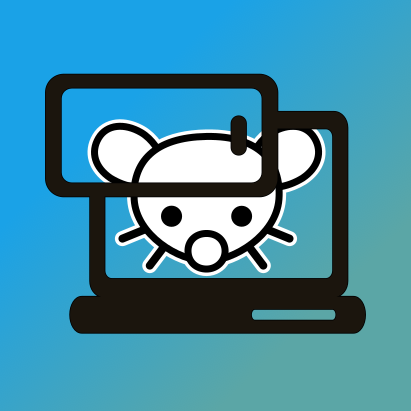

Why do I have to give out my email? 😕


Why do I have to give out my email? 😕


We’ll just have to take your word for it without a link


Specs:
Processors • Single or dual MIPS 64-bit R14000A™ 400MHz, R14000A™ 550MHz and 600MHz 2MB L2 cache Graphics • Integrated vertex processing engine • Integrated image and texture engine • 12-bit per component color and alpha • 24-bit eye space Z buffer and 8-bit stencil • 10-bit digital to analog (DAC) display interface • Multiple concurrent visuals (8-bit window ID) • V6 & V10: 32MB graphics memory, including up to 8MB texture memory • V8 & V12: 128MB graphics memory, including up to 104MB texture memory • Resolution up to 1920x1200 pixels @ 60 Hz and 72 Hz • Support for dual channel and stereo viewing mode Memory • 256MB-8GB synchronous DRAM (SDRAM) Key Applications • MCAD/MCAE • Digital Prototyping • 3D Animation • Medical Imaging • Scientific Visualization • Oil and Gas (seismic interpretation) • Visual Simulation • Editing and Compositing • Geospatial Imaging
Source
https://web.archive.org/web/20090621072040/http://www.sgi.com/products/remarketed/octane2/
#savedyouaclick
Airtags if you’re an iphone user. The tech is pretty cool, I use it to track my stuff when traveling.


There is a nonzero probability of getting hit by a meteor at any time. A woman in Alabama was hit by one while she was inside her home, you’re not even safe indoors!
You all might think I’m a fool for wearing a helmet every time I leave my definitely meteor-proof house, but I’m not taking any chances.


So Linux doesn’t work for your use case or you’re not interested in the benefits vs the extra time and effort. So what? Us “old fogies” are enjoying it fine.
I don’t really distro hop much (you need a rolling release distro and a stable distro, never needed more) but if you’re asking I’ll assume you’re a Linux newb so really I would recommend doing something less custom. If you want Fedora and KDE, install the Fedora ISO that comes with KDE and be done.
I won’t say it’s incredibly complex to run multiple desktop environments, but it’s definitely more of a pain and can cause weird issues (fucking NetworkManager) Better to stick to the “happy path” and make your machine as standard as possible so it’s more compatible with everything, especially if you’re new to Linux


“Never thought I’d find myself fighting alongside fucking Oracle”
“How about fighting alongside a friend?”
…n-no “Fucking Oracle” is fine let’s not get ahead of ourselves
Why do you want to disable it? Unless it’s causing conflicts your easiest option by far is to simply disable all extensions and pretend it doesn’t exist
Tl;dr it’s likely that some of your hardware isn’t well supported in Linux or have vendors downright hostile to open source (fuck you, Broadcom and Nvidia) and causes you weird issues that almost always get fixed by the community but may not always work “out of the box”
I’ve been in Linux since 2008 and have asked this question in many ways over the years. To get a real answer I’d dig more into the errors you’re encountering. I think that a lot of the “simple fixes” you mention are simply options that some hardware configurations need and some don’t.
Flatpak and Linux in general deal with the same huge task as Windows, which is “support any hardware configuration with one universal solution”. While Windows is given every advantages by cooperative hardware vendors releasing official drivers, Linux is mostly supported by open source reverse engineered drivers.
This means that no “universal” system is likely to work all the time in every case, but that’s ok because it’s all open source and the community finds a way.
You mentioned themes and some graphical packages, do you have an Nvidia GPU? I never had anything but trouble on Linux with them.

No. It’s always a pain the ass. I love how it makes me feel though.

I’ve never seen it but fuck Human Centipede. I read it on Wikipedia and it still fucked me up
Can’t get hacked if all your services are down because you can’t get those cocksuckingmothershitbitchingassbastard routing tables right 🤯
I laughed but I dunno about you guys but I don’t publicly self host anything. If you can’t auth via ssh or VPN then you’re not accessing a damn thing from my home network. I’ve got multiple routers that I could set up some isolation with but it’s just too close to home.
Has something recently changed? Fedora has always been the fully open source upstream to RHEL but I’m not aware of any recent changes to their model.
I’m fine with an open source company keeping some of their sauce secret. Their contributions to open source for decades are a net gain for the community.
But yeah fedora is the only other bleeding edge distro I would ever use besides arch. Definitely still trustworthy as far as I know
Brendan Eich worked really hard to turn himself into just another tech bro incel but Brave is a really good browser and the engineers deserve to not have their accomplishments overshadowed by a weird adult obsessed with other people’s genitals.
They created a novel and interesting approach to ads with their BAT token and Brave is probably the most private browser you can get if you’re stuck with Chromium browsers.
As often as I’ve tried to switch to Firefox I always end up encountering issues and going back to Brave. I wish he’d step down so Brave can shine without his bullshit whining hanging over them.